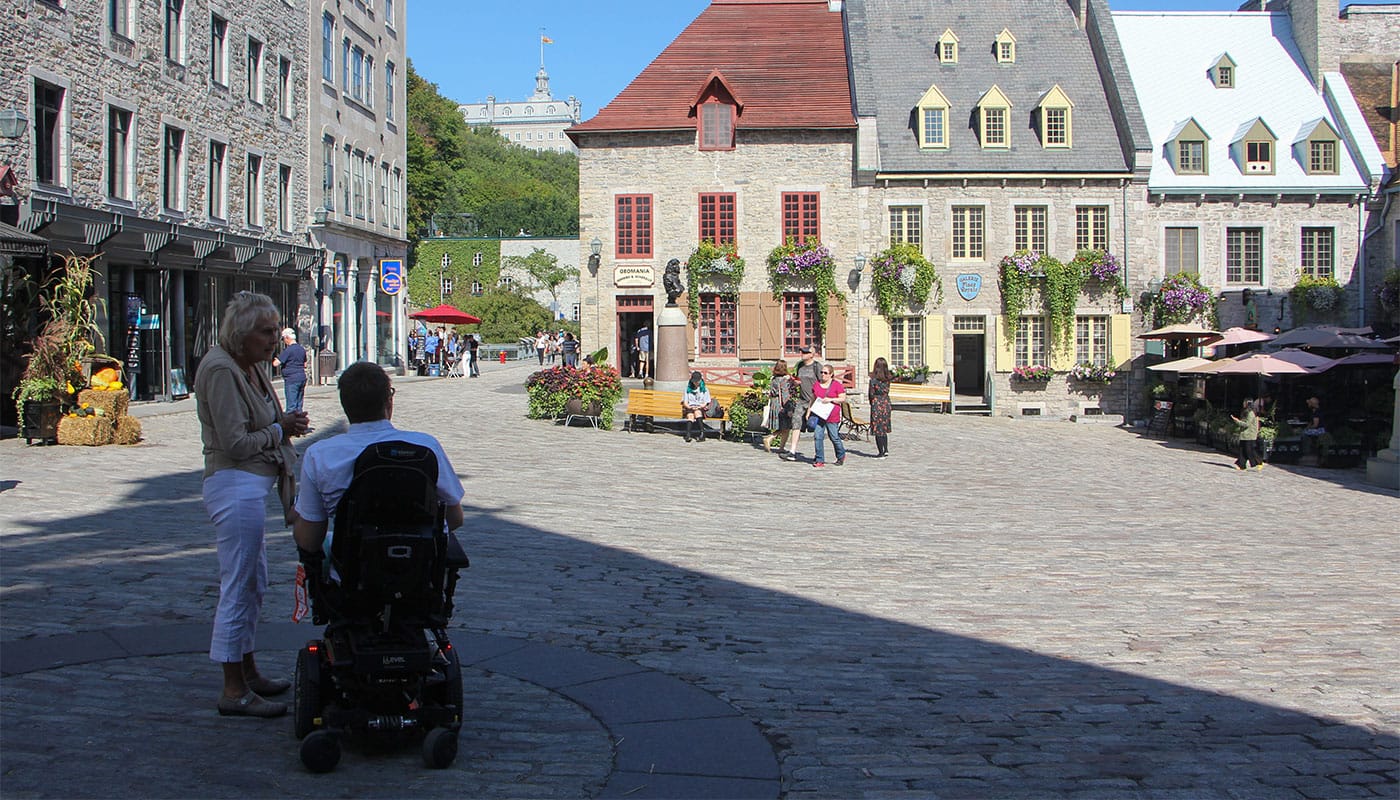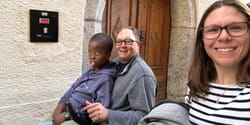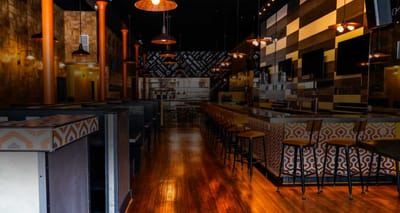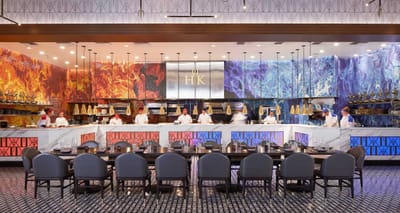I recently took a guided tour of Old Quebec, the historic center of Quebec City, which has some buildings that date back to the 17th century. Recognized as a UNESCO World Heritage Site, Old Quebec is popular among tourists for its old-world European architecture and charm.
Place Royale, the square in the lower town of Old Quebec City, is especially beautiful and was used as a filming location in Steven Spielberg’s movie ‘Catch Me If You Can.’ The square’s European style was used to depict the “small village” of Montrichard, France in the blockbuster hit starring Tom Hanks and Leonardo DiCaprio.
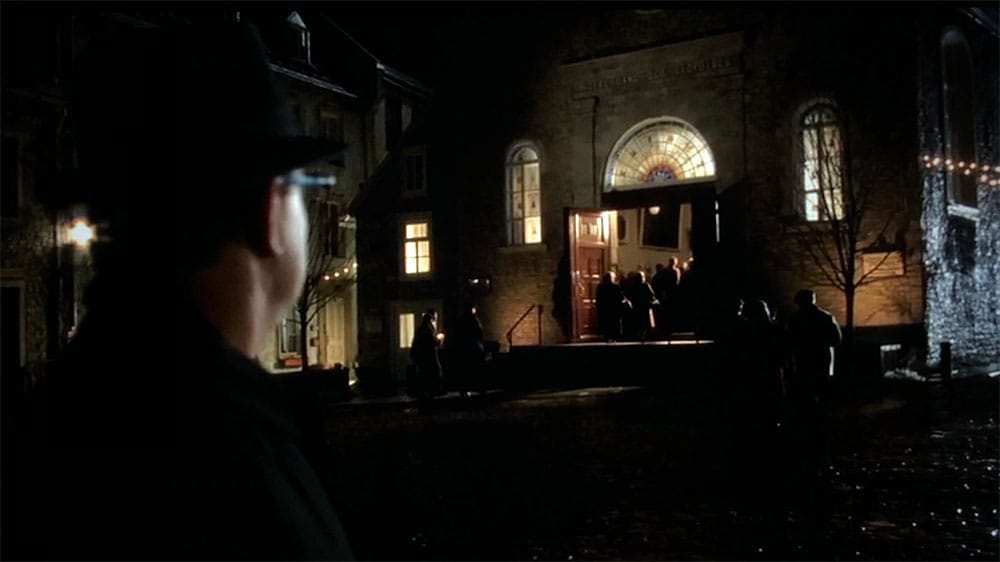
A still photo taken from the film and pictured above shows Tom Hanks looking upon a church as he prepares to arrest DiCaprio’s character. That church is actually Notre-Dame-des-Victoires, a Roman Catholic Church that was constructed in Old Quebec beginning in 1687.
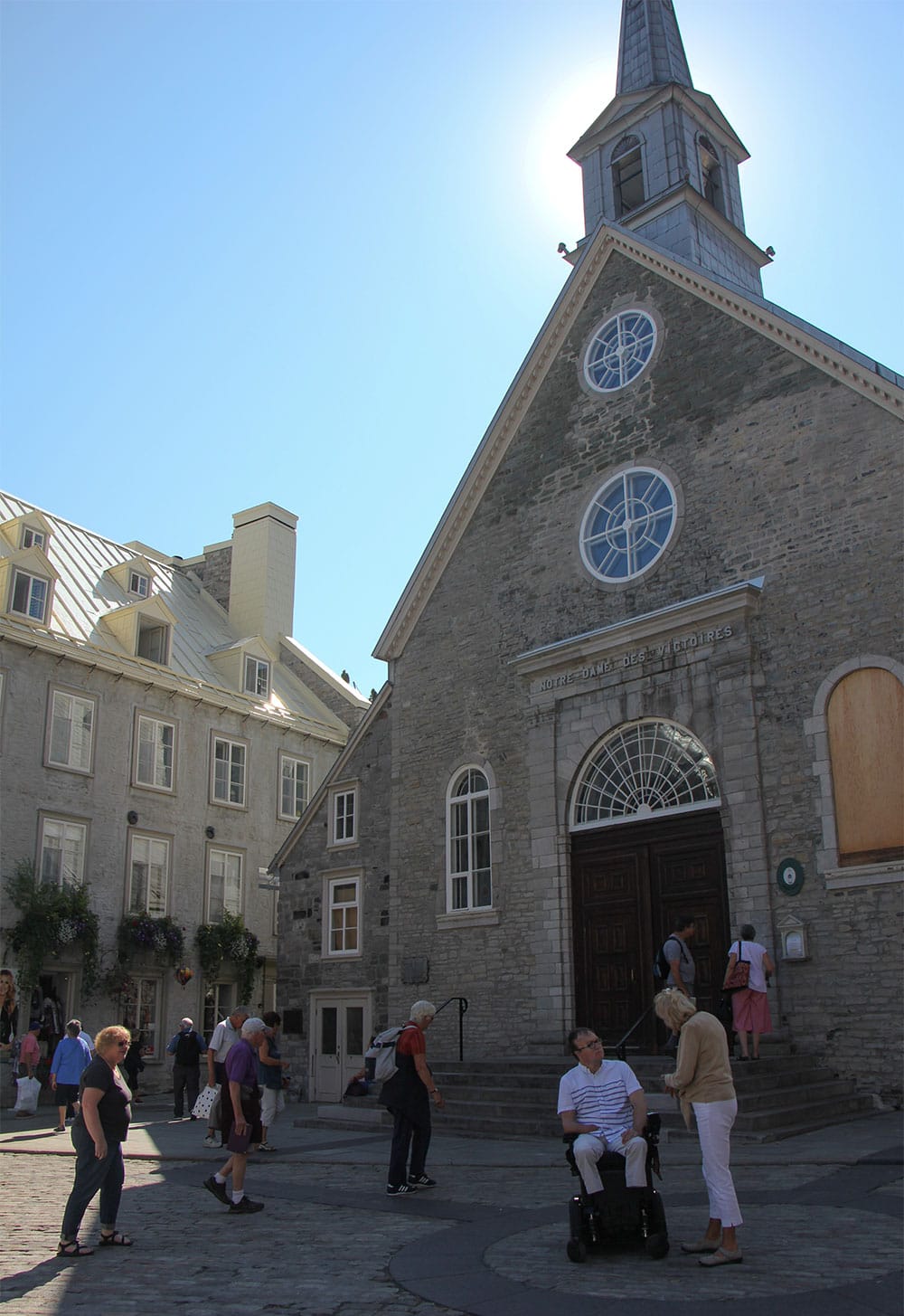
Today, the Church is central to Place Royale and one of the oldest surviving structures in the Province of Quebec. But the square has not always been so beautiful. After many years of neglect, major investments were made in Quebec’s Old City during the 1960s and 1970s, restoring the area to its original grandeur. Historic buildings like the Notre-Dame-des-Victoires church blend in nicely with the modern structures around them, which were designed to pay homage to architectural trends of the past.
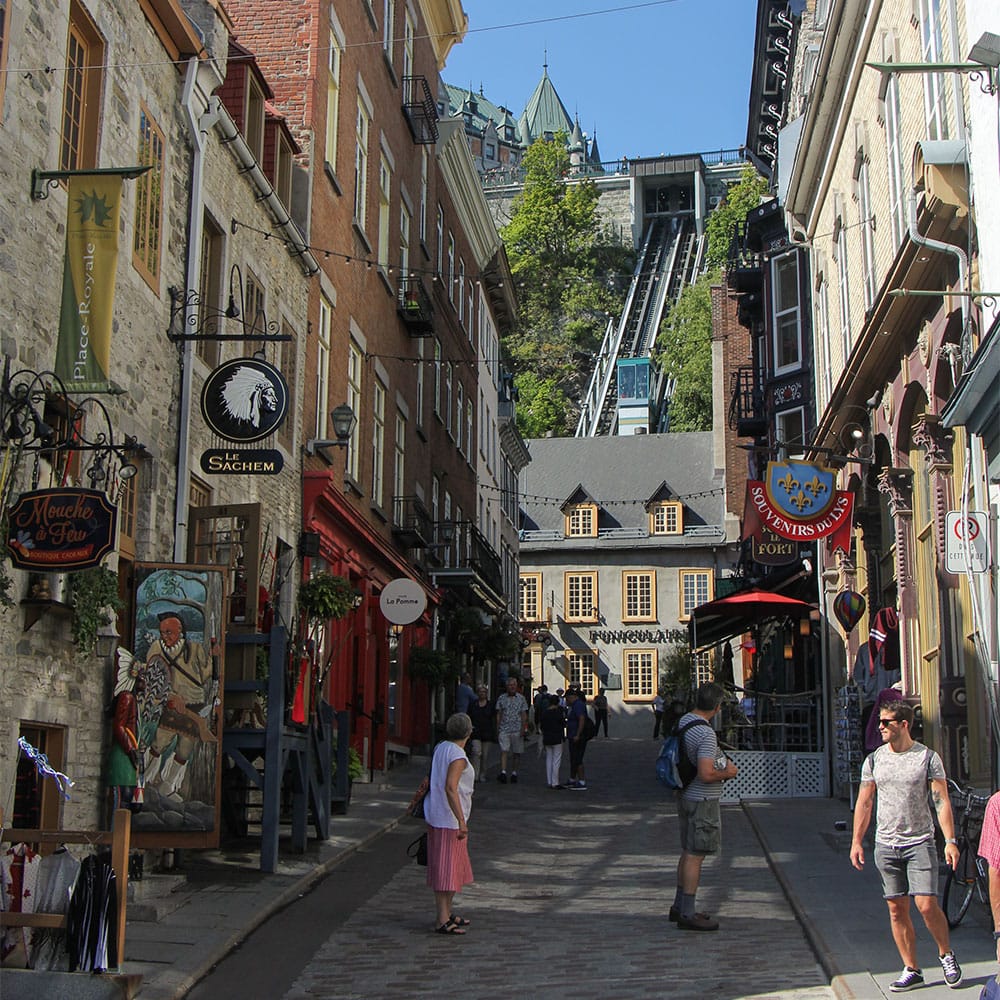
From the lower town of Old Quebec, just steps from Place Royale, a funicular transports people to the upper town. The funicular is wheelchair accessible, but is only available for use by wheelchair users from May 1st through October 31st each year due to weather constraints. For wheelchair users, riding the funicular is free of charge. More information on the funicular in Quebec’s Old City is available at www.funiculaire.ca.
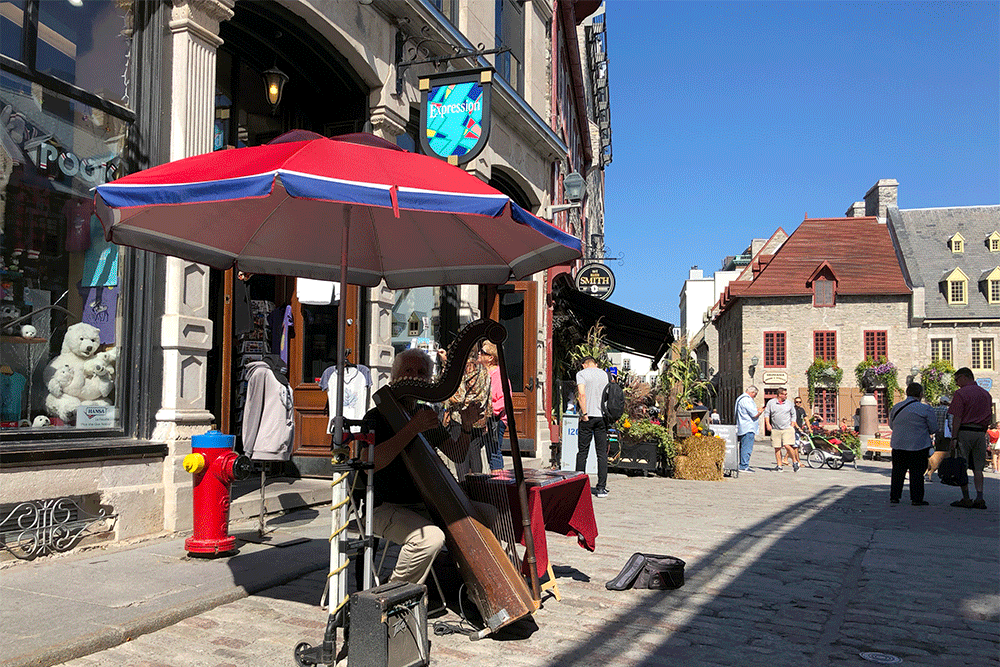
Street performers add to Old Quebec’s charming atmosphere. On the day of my visit, a man played the harp while other performers focused on entertaining families with children.
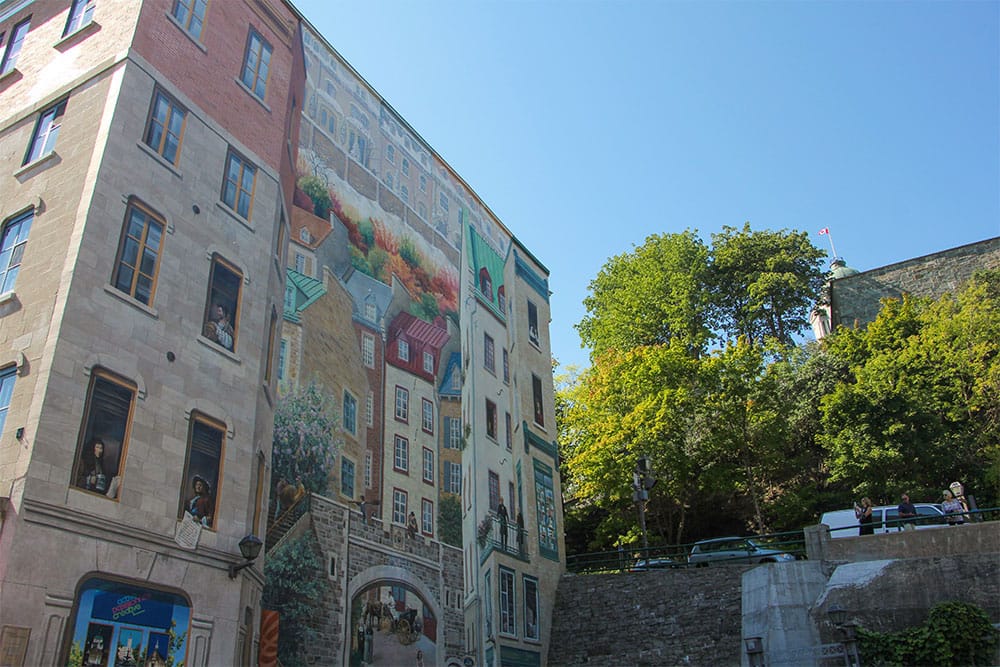
Just beyond Place Royale is a large mural titled Fresque des Québécois. The mural occupies the entire side of a building and was completed in 1999. It depicts the past and present of Quebec City and its people, and is just one of the many murals visitors will discover in the city.
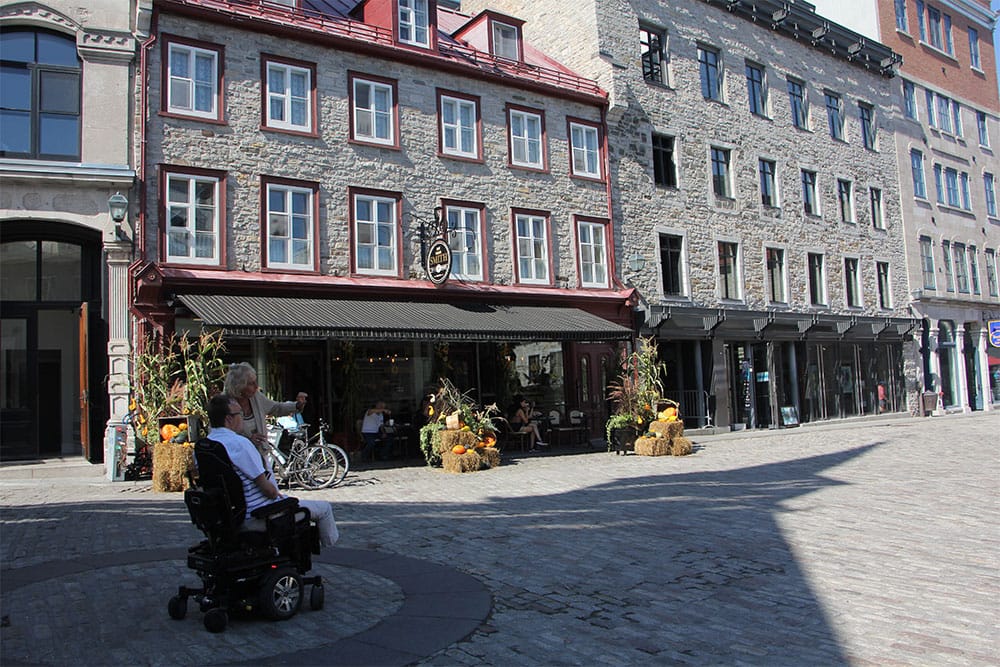
For wheelchair users visiting this historic place, cobblestones and other accessibility barriers will present challenges. A step at the entrance to buildings is common, but some businesses, restaurants and shops do provide barrier-free entry. Despite the limitations to access, I still encourage you to tour this unique place. Beauty is good for the soul, and Old Quebec is overflowing with architectural and cultural beauty.
Additional information on the accessibility of businesses and attractions in Old Quebec can be found on the Kéroul website. Resources are also available from Quebec City Tourism, the local destination marketing organization.

